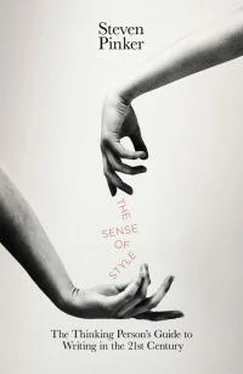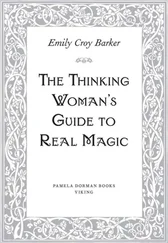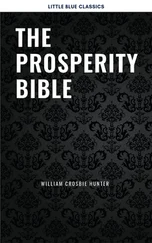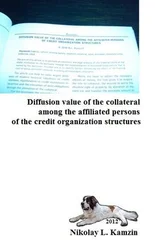Menand poked fun at her, pointing out that the relative clause beginning with who was nonrestrictive (Truss meant to dedicate her book to all the striking printers, not to a subset who demanded payment for punctuation) and thus demanded a comma before it. Truss’s defenders pointed out that the alternative ( To the striking Bolshevik printers of St Petersburg, who, in 1905, demanded … ) would have been awkwardly thick with commas, forcing the reader to hopscotch through that part of the sentence a word or two at a time. One pointed out that Menand was universalizing the famously eccentric policy of his major outlet, The New Yorker, which sets off all supplementary phrases with commas, no matter how gratuitous in context or how juddering the pronunciation. Consider this sentence from a 2012 New Yorker article on electoral strategists for the Republican Party: 62
Before [Lee] Atwater died, of brain cancer, in 1991, he expressed regret over the “naked cruelty” he had shown to [Michael] Dukakis in making “Willie Horton his running mate.”
The commas around of brain cancer are there to make it clear that the cause of death is mentioned as a mere comment: it isn’t the case that Atwater died multiple times and that he expressed remorse only after his brain-cancer death, not after the other ones. This fussiness is too much even for some of The New Yorker’ s own copy editors, one of whom kept a “comma-shaker” on her desk to remind her colleagues to sprinkle them more sparingly. 63
Not only are commas partly regulated by prosody, but until recently that was their principal function. Writers used to place them wherever they thought a pause felt natural, regardless of the sentence’s syntax:
It is a truth universally acknowledged, that a single man in possession of a good fortune, must be in want of a wife.
A well-regulated militia, being necessary to the security of a free state, the right of the people to keep and bear arms, shall not be infringed.
Jane Austen and the framers of the American Constitution would get poor grades from composition teachers today, because commas are regulated less by prosody and more by syntax (this is the trend that The New Yorker has taken to an extreme). Austen’s sentence today would be stripped of both commas, and the Second Amendment would get to keep only the one after “free state.”
Though the comma which demarcates a supplementary phrase may be omitted when the pronunciation zips right through it, the converse is no longer true: a comma may not separate the elements of an integrated phrase (such as a subject and its predicate), no matter how badly its narrator may want to take a breath at that juncture. With the rules for comma placement being such a mishmash of syntax and prosody, it’s no wonder that the complaints of composition instructors about comma placement in their students’ writing fall into the same two categories as the complaints of people writing to Ann Landers about sex in their marriages: (1) too much, and (2) too little. 64
In the “too much” category we have errors in which students place a comma in front of an integrated phrase, usually because they would pause at that point in pronouncing it:
[Between the subject and a predicate:] His brilliant mind and curiosity, have left.
[Between the verb and its complement:] He mentions, that not knowing how to bring someone back can be a deadly problem.
[Between a noun for an idea and a clause spelling out its content:] I believe the theory, that burning fossil fuels has caused global warming.
[Between a noun and an integrated relative clause:] The ethnocentric view, that many Americans have, leads to much conflict in the world.
[Between a subordinator and its clause:] There was a woman taking care of her husband because, an accident left him unable to work.
[Within a coordination of two phrases:] This conclusion also applies to the United States, and the rest of the world.
[Between a definite generic noun and the name identifying its referent (neither comma is correct here):] I went to see the movie, “Midnight in Paris” with my friend, Jessie.
And in the “too little” category, students forget to insert a comma to set off a supplementary word or phrase:
[Surrounding a sentence adverb:] In many ways however life in a small town is much more pleasant.
[Between a preposed adjunct and the main clause:] Using a scooping motion toss it in the air.
[Before a result adjunct:] The molecule has one double bond between carbons generating a monounsaturated fat.
[Before a contrast adjunct:] Their religion is all for equal rights yet they have no freedom.
[Before a supplementary relative clause:] There are monounsaturated fatty acids which lack two hydrogen atoms.
[Before a direct quotation:] She said “I don’t want to go.” [Compare the complementary error with an indirect quotation: She said that, she didn’t want to go. ]
Sloppy writers also tend to forget that when a supplementary phrase is poked into the middle of a sentence, it needs to be set off with commas at both ends, like matching parentheses, not just at the beginning:
Tsui’s poem “A Chinese Banquet,” on the other hand partly focuses on Asian culture.
One of the women, Esra Naama stated her case.
Philip Roth, author of “Portnoy’s Complaint” and many other books is a perennial contender for the Nobel Prize.
My father, who gave new meaning to the expression “hard working” never took a vacation.
The other comma mistake is so common that composition teachers have invented many terms of abuse for it: the comma splice, comma error, comma fault, and comma blunder. It consists in using a comma to join two complete sentences, each of which could stand on its own:
There isn’t much variety, everything looks kind of the same.
I am going to try and outline the logic again briefly here, please let me know if this is still unclear.
Your lecture is scheduled for 5:00 pm on Tuesday, it is preceded by a meeting with our seminar hosts.
There is no trail, visitors must hike up the creek bed.
Unskilled writers are tempted to splice two sentences with a comma when the sentences are conceptually linked by one of the coherence relations discussed in chapter 5 and seem to want to snuggle up together in a single ensemble. But there are two reasons that comma splices drive careful readers crazy. (I won’t tolerate them in my students’ writing, not even in email.) They always create a garden path, distracting and annoying the reader. And they are easy to avoid, requiring no greater skill than the ability to identify a sentence.
There are several legitimate ways to splice two sentences, depending on the coherence relation that connects them. When two sentences are conceptually pretty much independent, the first should end with a period and the next should begin with a capital, just like they teach you in third grade. When the two are conceptually linked but the writer feels no need to pinpoint the coherence relation that holds between them, they can be joined with a semicolon; the semicolon is the all-purpose way to eliminate a comma splice. When the coherence relation is elaboration or exemplification (when one is tempted to say that is, in other words, which is to say, for example, here’s what I have in mind, or Voilà! ), they may be linked with a colon: like this. When the second sentence intentionally interrupts the flow of the discussion, requiring the reader to wake up, think twice, or snap out of it, a writer can use a dash—dashes can enliven writing, as long as they are used sparingly. And when the writer pinpoints the coherence relation he has in mind with an explicit connective such as a coordinator ( and, or, but, yet, so, nor ) or a preposition ( although, except, if, before, after, because, for ), a comma is fine, because the phrase is a mere supplement (like the underlined clause, which I fastened to the preceding one with a comma). Just don’t confuse these connectives with sentence adverbs, such as however, nonetheless, consequently, or therefore, which are themselves supplements of the clause they precede. The clause with the adverb is a freestanding sentence; consequently, it cannot be joined to its predecessor with a comma. Here, then, are the possibilities (the asterisk indicates an illicit comma splice):
Читать дальше












